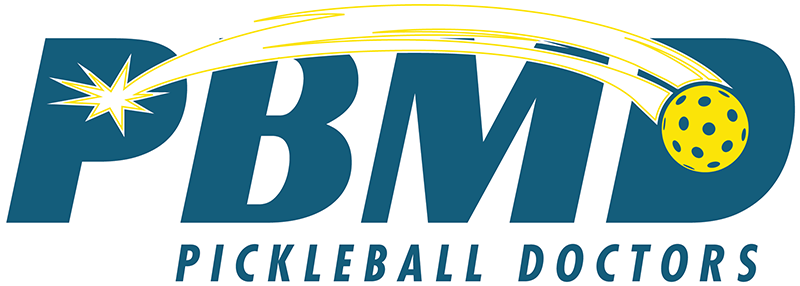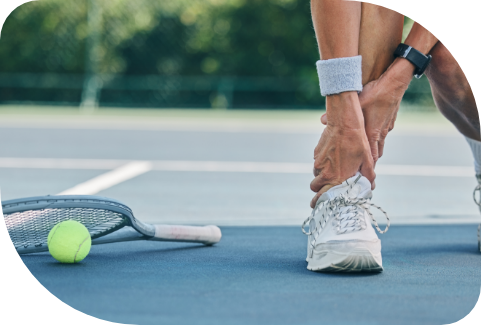Pickleball Treatment
Leaders
in Southern Oregon
Pickleball players wanting top-tier bone, joint, and muscle care can find everything they need at Southern Oregon Orthopedics. As the most preferred orthopedic practice in the region,* we offer the highest level of care focused on you.
As the region’s leading orthopedic providers, pickleball players are our specialty. Whether you're a seasoned competitor or a weekend warrior, we understand the unique demands pickleball places on your body.
Our specialty-trained and board-certified orthopedic doctors are pickleball enthusiasts themselves. They have the experience and knowledge to diagnose your injury quickly and create a personalized treatment plan to get you back on the court doing what you love.
We focus on getting you back to peak performance, not just managing pain. Together, we'll develop a treatment and rehabilitation plan that gets you moving confidently again. Don't let an injury sideline you. With help from our team, we’ll keep you on the court, rain or shine.
*Independent Market Research
Our pickleball injury experts at Southern Oregon Orthopedics are proud to be nationally recognized as Pickleball Doctors. Offering expert injury prevention and performance optimization guidance, the elite group of doctors at Pickleball Doctors are committed to keeping you on top of your game on the pickleball court.
Preparing & Preventing Injury in Pickleball
The key to staying injury-free in pickleball isn't luck, it's smart training. Don't wait for a pain to slow you down. By focusing on strength training and targeted stretches off the court, you can minimize your risk of injury on the court.
Here at Southern Oregon Orthopedics, we know prevention is key. As Southern Oregon’s leader in pickleball injury care, we teach the Pickleball 10 to Win program. This comprehensive workout program isn't just about hitting harder, but it’s also about keeping you healthy and in the game.
Up Your Game
This specially designed routine targets flexibility, agility, strength, and endurance—the key ingredients for peak pickleball performance. With these exercises, you'll be moving faster, hitting harder, and leaving your opponents in the dust!
Exercise 1
BEAR HUGS
Step 1. Stand straight or lie on your back and open up your arms, pulling your shoulders back to broaden your chest.
Step 2. Bring your arms back in, wrapping them around your chest, and pat the back of your shoulders.
Step 3. Repeat quickly 20 times.
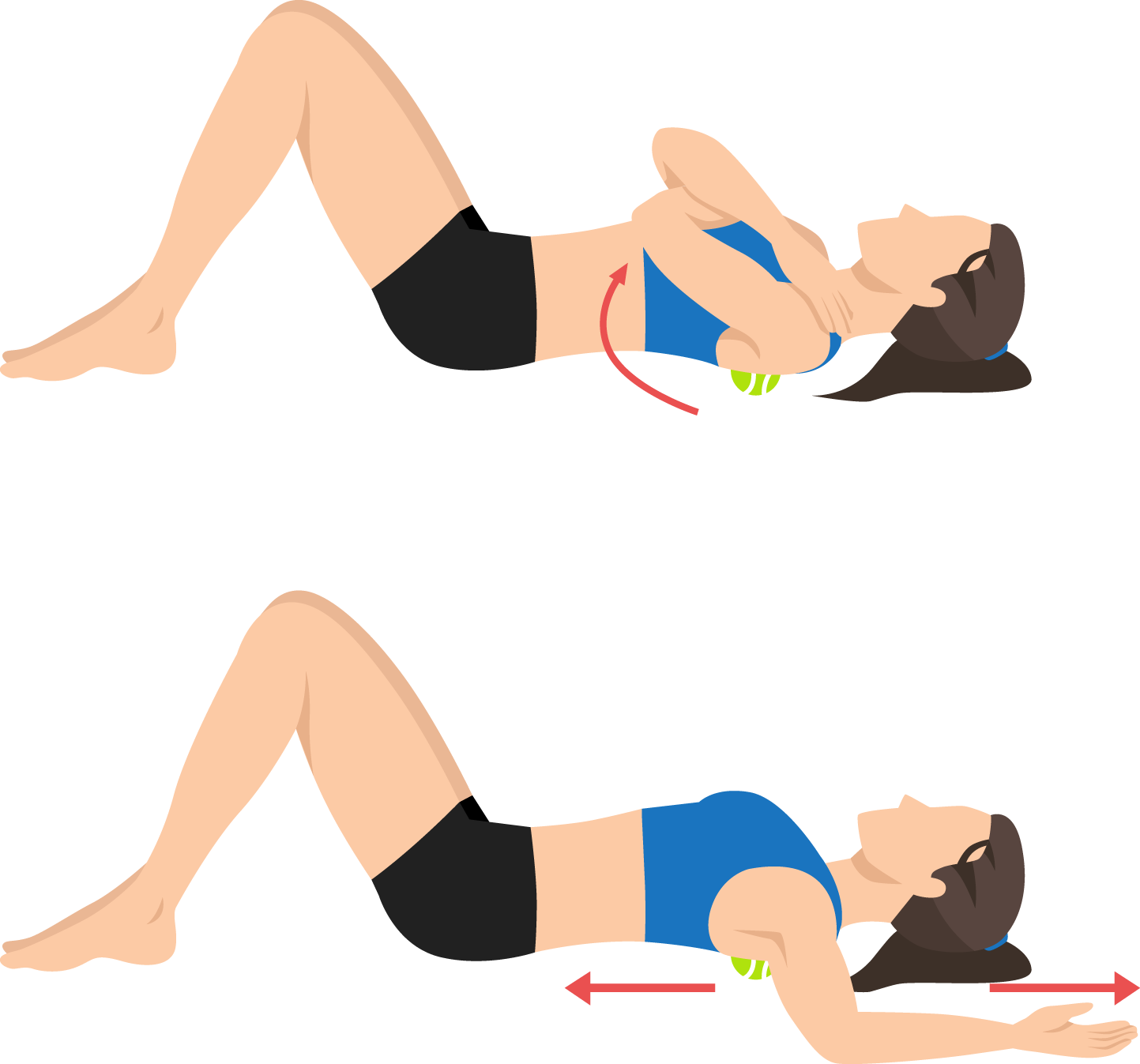
For the Win: Do some resistance bear hugs. Hold a resistance band around your back. Then, reach your arms out in front of you like you are hugging someone. Hold for 3 seconds. Repeat 10 times.
Exercise 2
POGO HOPS
Step 1. Stand with your feet shoulder-width apart.
Step 2. Bend your knees slightly, but keep your posture straight.
Step 3. Keep your feet together and jump up and down in place.
Step 4. Repeat for 30 seconds.
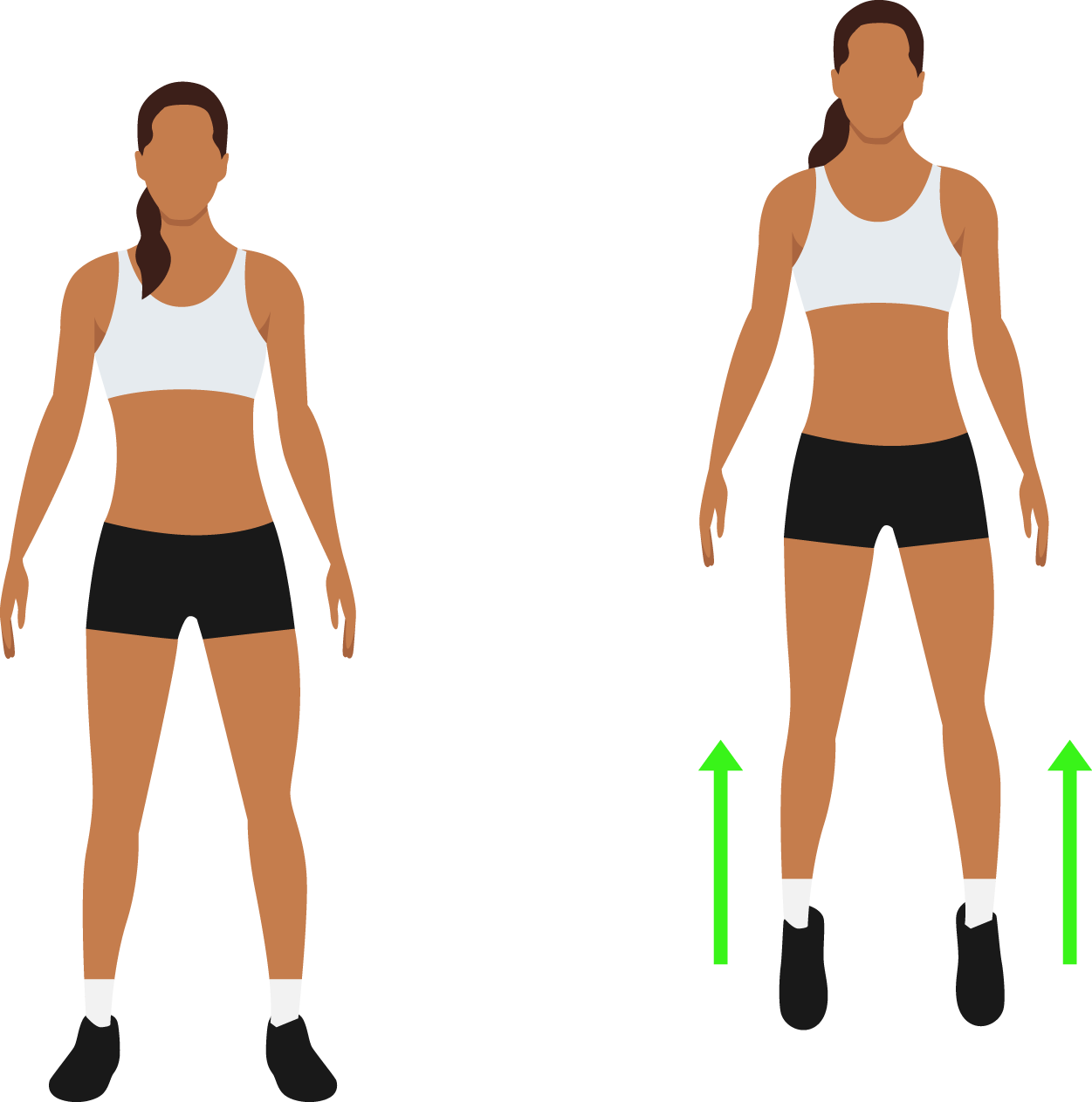
For the Win: Do some single-leg hops. Balance on one leg and hop in place for 30 seconds. Repeat while balancing on your other leg. For better agility training, use a line to hop over from left to right.
Exercise 3
SIDE-LYING LEG LIFTS
Step 1. Lie on your side with your legs straight and one leg on top of the other.
Step 2. Bend your knees slightly and move your top leg toward the sky or ceiling.
Step 3. Lift your leg slowly and lower it slowly.
Step 4. Repeat 10 times on each side.
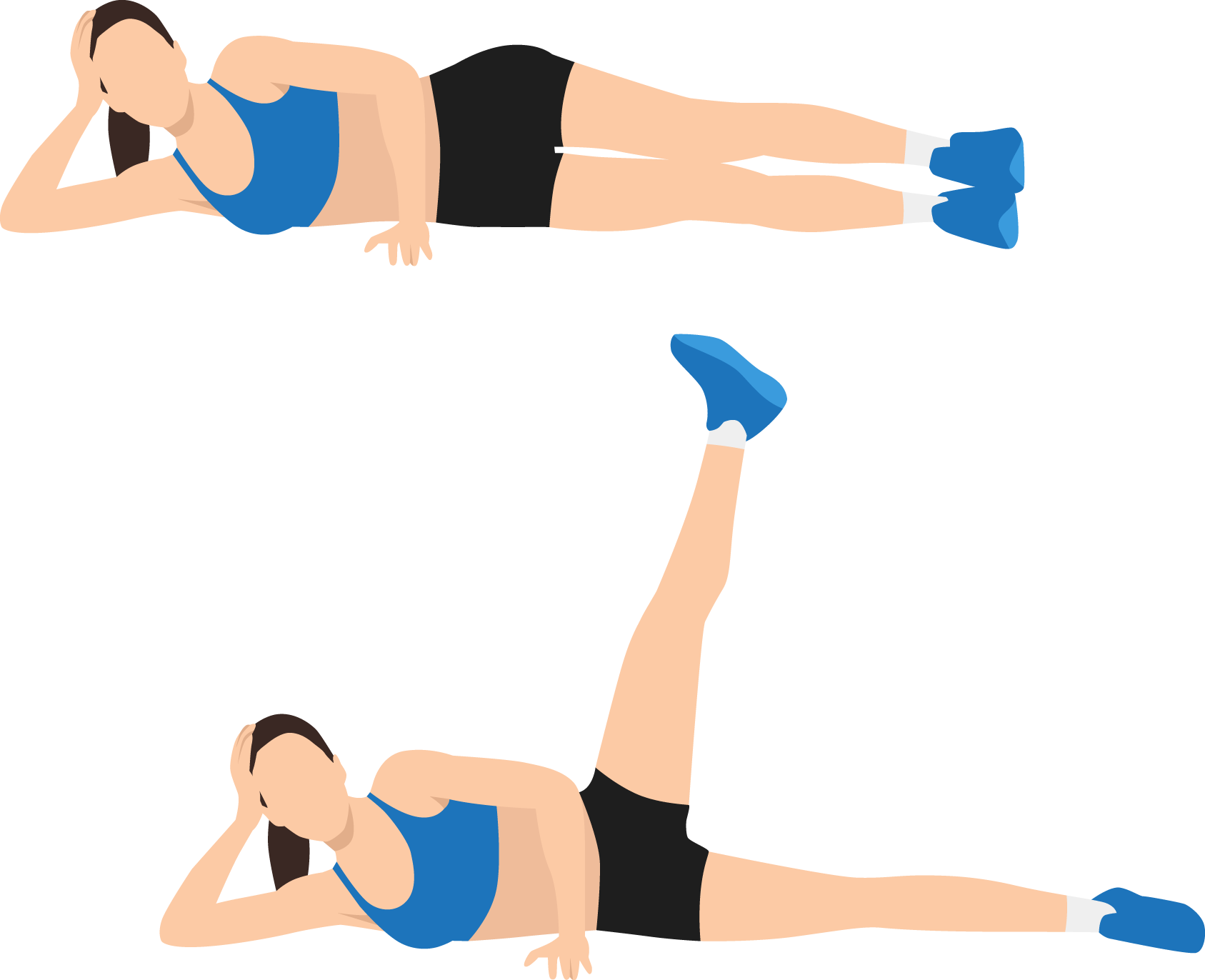
For the Win: Try resistance leg lifts! While lying on your side, place a resistance band around your legs and above your knees while you complete your leg lifts. For more of a challenge, place the band around your ankles.
Exercise 4
SINGLE-LEG BALANCE
Step 1. Stand with your feet hip-width apart.
Step 2. Lift one foot off the ground. If you need, hold your arms out to help you balance.
Step 3. Hold this position for up to a minute or as long as you can.
Step 4. Repeat on the other side.

For the Win: Do single-leg extensions. Stand on one foot. Lift your other leg, extending it behind you, in front of you, and off to the side. Center your leg before each extension. Repeat 15 times on each side.
Exercise 5
STANDING QUAD STRETCH
Step 1. Stand on one foot and pull the other behind you, holding the ankle.
Step 2. If you need, hold onto something for balance.
Step 3. Pull your heel toward your buttocks, and hold for 30 seconds.
Step 4. Repeat on each side.
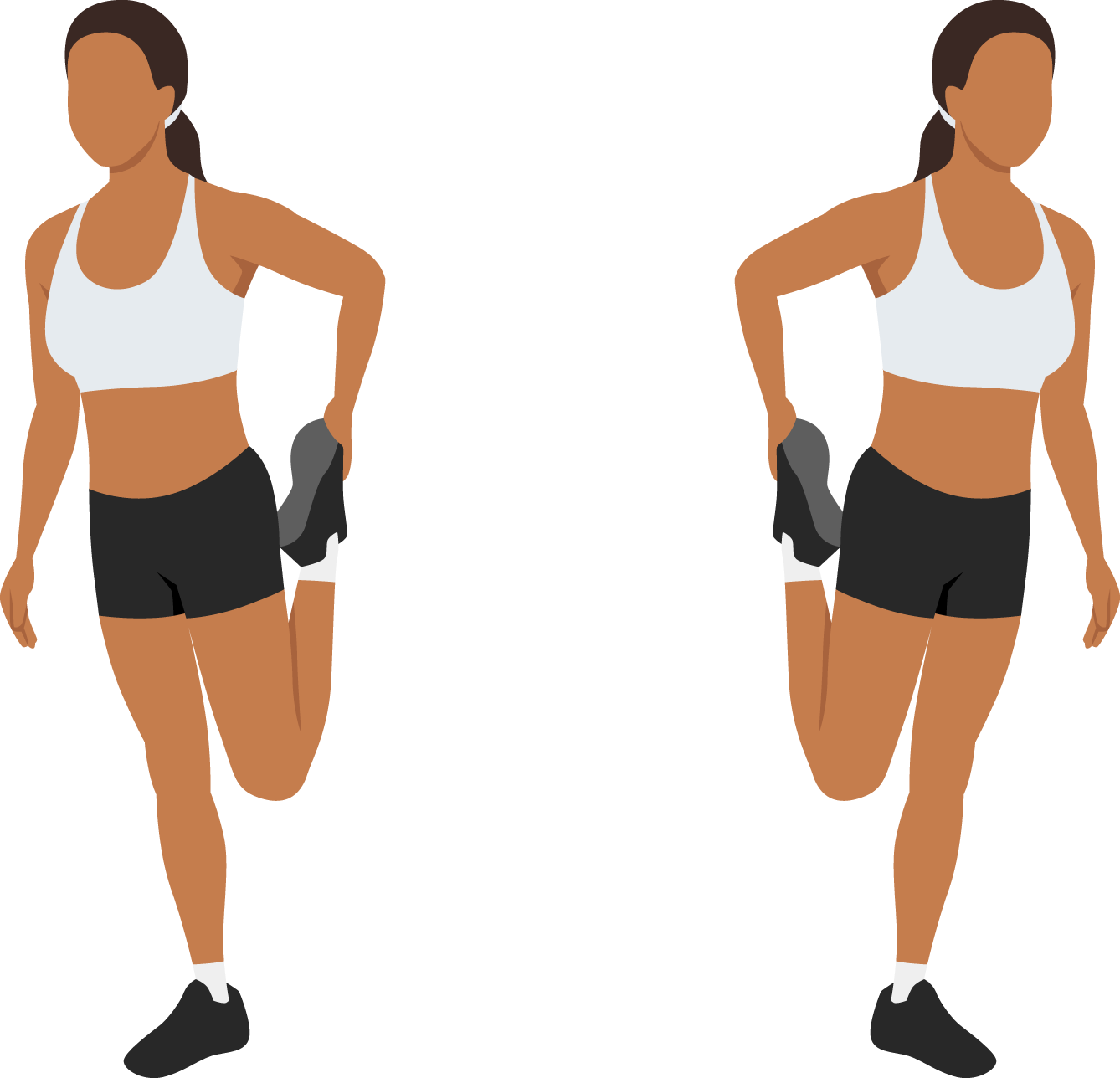
For the Win: Do kneeling quad stretches. Kneel on one knee with the opposite foot planted flat in front of you. Push your hips forward and hold for 30 seconds. Repeat for 3 sets on each side.
Exercise 6
ROWS
Step 1. Put a resistance band around a stable surface, like a tree or fence, holding the band in each hand.
Step 2. Stand facing the band with your feet hip-width apart.
Step 3. Pull the band toward you, squeezing your shoulder blades.
Step 4. Return to your starting position.
Step 5. Repeat 15 times.

For the Win: Do some bodyweight rows. Instead of resistance bands, use your body weight. Find a stable horizontal surface, such as a table or bar, and lie underneath it, grasping the surface firmly with both hands. Pull yourself up then lower yourself back down. Repeat 15 times.
Exercise 7
PLANKS
Step 1. Put your hands and knees on the ground, then extend your legs behind you.
Step 2. Support your weight on your forearms and toes.
Step 3. Keep your body straight from your head to your heels.
Step 4. Hold this position as long as you can.

For the Win: Try side planks with resistance in your arms. Support your weight on one foot and forearm. Hold a resistance band in both hands, and extend your free arm toward the sky or ceiling. Repeat 10 times on each side.
Exercise 8
HEEL RAISES
Step 1. Stand with your feet shoulder-width apart.
Step 2. Slowly lift your heels off the ground, rising up onto the balls of your feet.
Step 3. Pause as you get to your tip-toe position, then lower your heels slowly back down to the ground.
Step 4. Repeat 20 times.
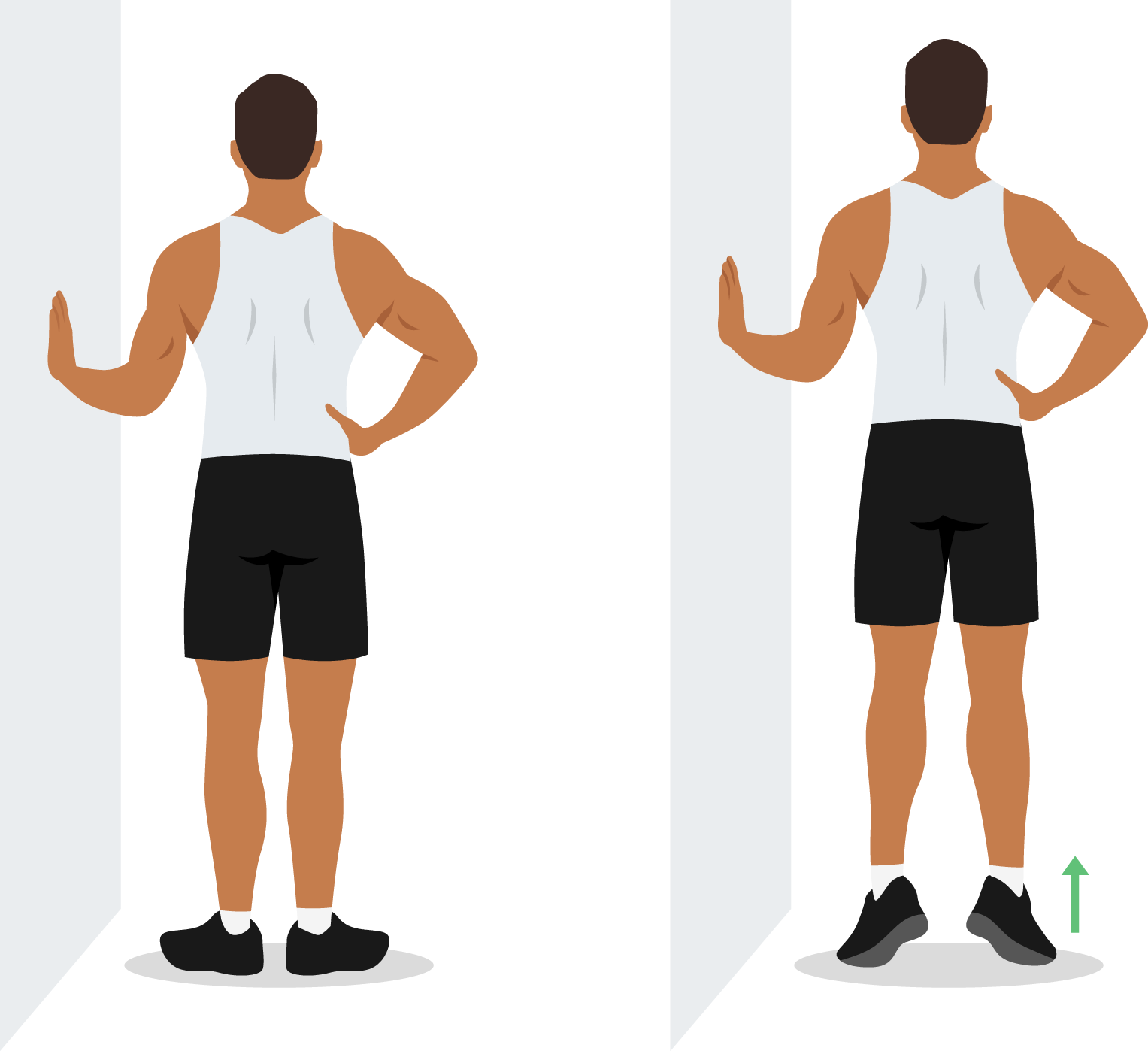
For the Win: Try single-leg heel raises. Instead of using both feet, lift one foot off the ground while putting your weight on the other foot and lifting that heel up. Repeat 20 times on each side.
Exercise 9
SQUATS
Step 1. Stand with your feet shoulder-width apart.
Step 2. Lower your hips down and back as if you are sitting down in a chair.
Step 3. Keep your weight on your heels.
Step 4. Return to a standing position.
Step 5. Repeat 10 times.
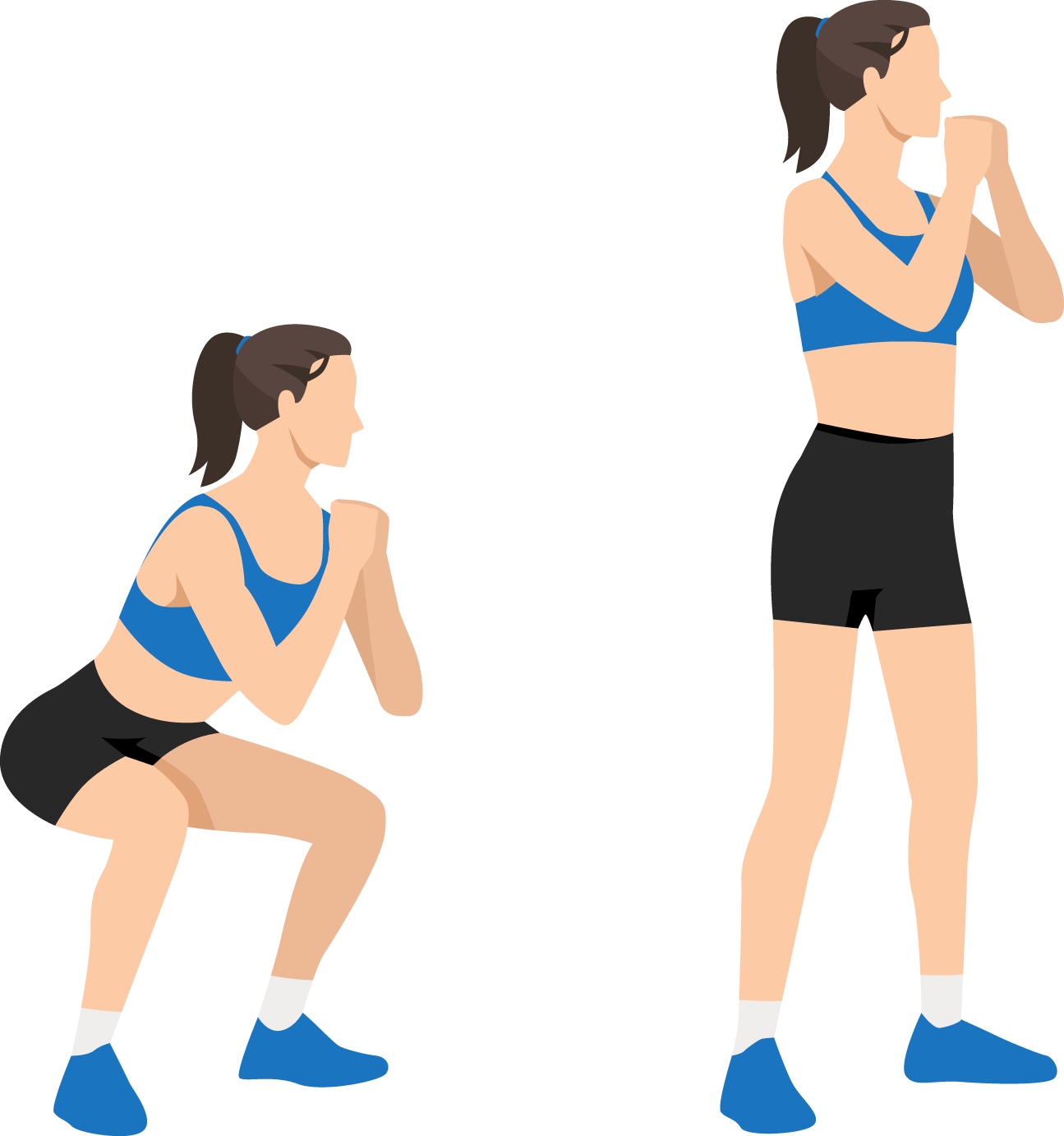
For the Win: Try single-leg squats. Instead of two feet down as you squat, lift one foot off the ground and extend it in front of you as you lower your hips and return to a standing position. Repeat 10 times on each side.
Exercise 10
LUNGES
Step 1. Stand with feet hip-width apart.
Step 2. Take a big step forward with one foot.
Step 3. Lower your hips down until your front knee is bent at a 90-degree angle.
Step 4. Keep your weight on your front heel.
Step 5. Push off your front foot to return to a standing position.
Step 6. Repeat 10 times on each side.
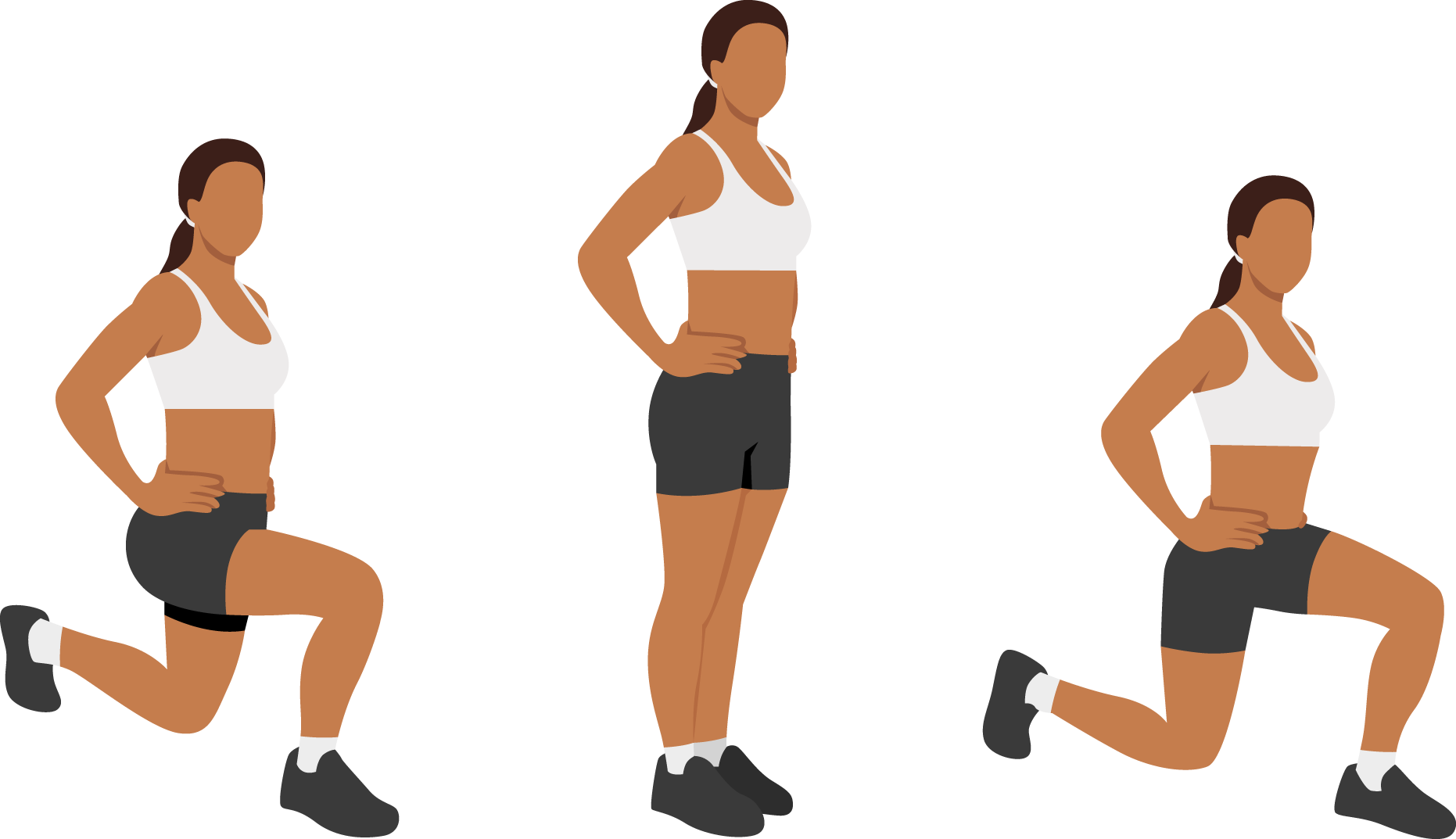
For the Win: Do backward and side lunges. For backward lunges, take a big step backward, lower, and push off your back foot to return to standing. For side lunges, take a step out to the side, lower yourself on that side, and push back up from that foot to return to standing.
Signs You Should Seek a Pickleball Injury Expert
Pickleball is fun, but pain can put a damper on your game. Don't ignore aches and pains, hoping they'll disappear. Ignoring an injury can make it worse and keep you off the court longer.
The most effective injury treatment plan requires a precise diagnosis from an experienced doctor, and our specialists at Southern Oregon Orthopedics are here to help. Request an appointment online or call (541) 779-6250 to consult with one of our specialty-trained sports medicine doctors if you experience:
Here are some signs you might need to schedule an appointment with one of our doctors:
- A fall on the court accompanied by a popping sensation in your arm, wrist, hip, shoulder, back, or knee
- Inability to bear weight on your foot, ankle, knee, or leg
- Persistent muscle or joint pain despite rest and icing
- Discomfort in your hand, wrist, or forearm when holding your pickleball paddle
- Shoulder, back, neck, or arm pain while swinging your pickleball paddle
- Sudden and persistent pain in specific areas of your back, arms, or legs after playing, especially if the area is tender or warm to the touch
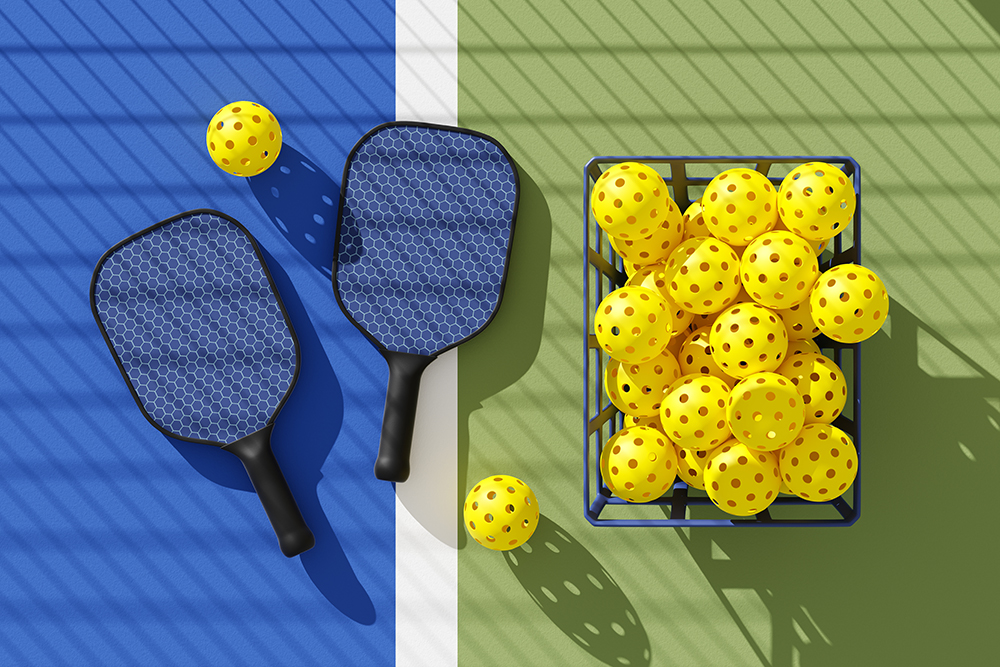
Who to See
Care to Keep Pickleball Players on the Court
Get back to your best game with personalized pickleball injury care.
Southern Oregon Orthopedics’ pickleball specialists understand that the best treatment plan fits your individual goals. We'll work with you to diagnose your injury and create a treatment approach that keeps you active. Our focus is on nonsurgical care whenever possible, but if surgery is needed, our team uses the latest minimally invasive techniques for a faster recovery.
Common Pickleball Injuries & Treatments
Our experts at Southern Oregon Orthopedics address every common pickleball injury, including those listed below. For every pickleball player we treat, we offer comprehensive, personalized care plans. Some of the treatment plans available are also listed below.
Injuries
- Ankle sprains
- Anterior cruciate ligament (ACL) tears
- Golfer’s elbow (medial epicondylitis)
- Dislocations
- Meniscus tears
- Muscle strains and tears
- Patellar tendonitis (jumper's knee)
- Rotator cuff tears
- Shin splints
- Shoulder impingement syndrome
- Stress fractures
- Tennis elbow (lateral epicondylitis)
Treatments
Nonsurgical Care
- Anti-inflammatory medications
- Bracing or taping
- Injections, including orthobiologics
- Physical therapy and rehabilitation
- Rest, ice, compression, elevation (rice) therapy
Surgical Care
- ACL repair or reconstruction
- Arthroscopic surgery for minimally invasive repair of joint injuries
- Fracture fixation with internal or external fixation
- Meniscus repair or removal
- Rotator cuff repair
- Tendon and ligament repair or reconstruction
Injured? Walk In
If you’ve suffered an injury like a sprain, strain, or broken bone, get prompt care at our orthopedic walk-in clinic in Medford, where expert orthopedic providers deliver urgent care to people of all ages.
Visit our orthopedic walk-in clinic for prompt orthopedic care. Appointments and walk-ins are welcome.
